Northern Lights Septet No. 3 1985
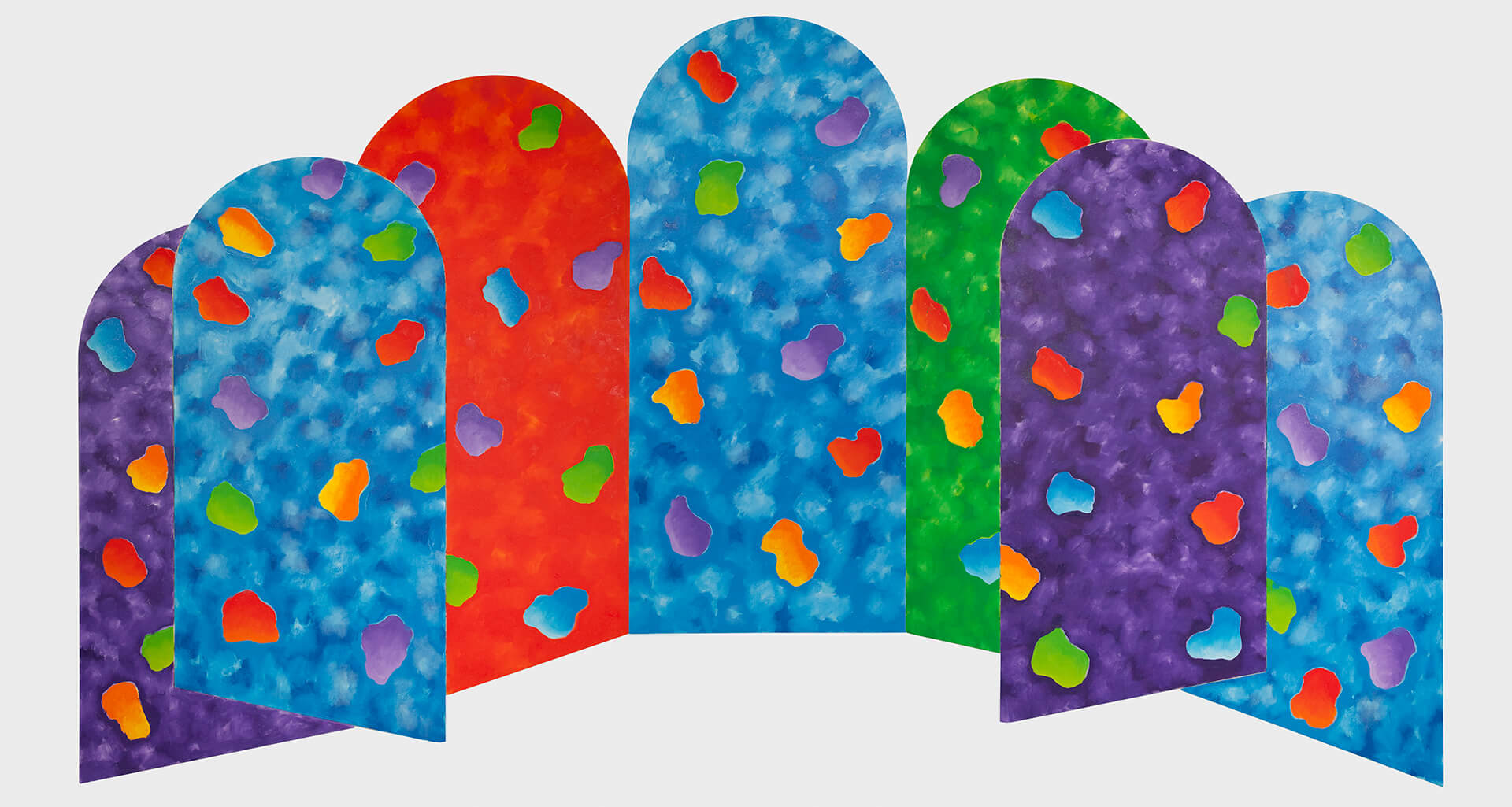
Gershon Iskowitz, Northern Lights Septet No. 3, 1985
Oil on canvas on shaped plywood in seven sections, overall: 233.5 x 410.2 cm
University of Lethbridge Art Gallery
In 1984–85 Gershon Iskowitz produced twenty-two paintings, both single canvases and diptychs, titled Northern Lights. All have similar compositions, with ovoid blips clearly expressed on the grounds. Also in 1984, he embarked on six known multipanelled works that return to the rounded arch-top shape of the Uplands three-panelled painting, 1969–70. Iskowitz used the term “polytych” to describe these works because he painted them on seven separate but joined sections. They are the first he created on canvas mounted on an ingenious plywood support that had circles cut out of the plywood to reduce the weight. The Septet variations have identical shapes and dimensions.

Northern Lights Septet No. 3 is the only Iskowitz work that was accompanied by a Gallery Moos press release. In this text Iskowitz returns to recollections and inspiration from the 1967 Churchill, Manitoba, trip, but he also emphasizes his current work ethos: “It is the most recently completed painting which is the most important one.”
The importance lies in the series of paintings.
I had in mind for a long time to paint a polytych where I could really create lots of space and depth in terms of the sky and flying shape. I drew a lot of plans to develop the shapes of this polytych, and by trial and error evolved this shape. I must caution the viewer: the entire painting lies flat on the wall! It is not three-dimensional. Now, take another moment and have another look, because each shape forming the polytych is different, and yet the entire composition is harmonious. It seems to me that the seven-part shape of the canvas is something new, as nobody ever did this before, and I feel that such a painting as this, if seen in reality, translates really well what I wanted to say.
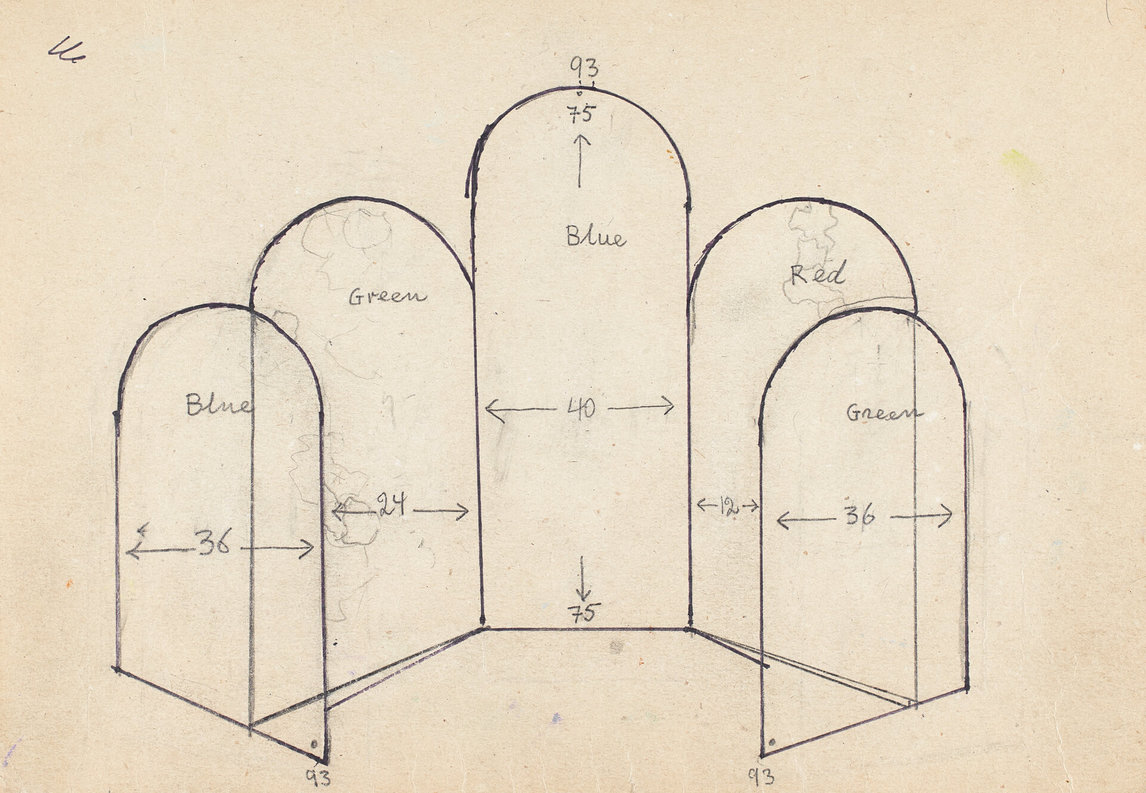
The paradox of direction and movement is now actualized in a pronounced optical distortion in the left and right segments, which each comprise what appear to be three overlapping arched pieces but are in fact seven individual paintings mounted as one. The centre panel in each of the Septets is the only one that is not distorted.
No apparent colour system is applied, though No. 3 and two other Septets have a dark-blue central panel. The other two have, respectively, a red central panel and an orange one. The most frequently used ground colour—in four of the Septets—is blue, while another one is purple. Nor is there any discernible progression in the distribution of the ovoid blips, though they follow the column-like arrangement of the Seasons–titled paintings from 1967. Curator Roald Nasgaard writes:
[The Septets are like] giant tablets or stained glass windows, or segments of an altarpiece. Stylistically, these works resemble the abstracted colour-field landscapes, but Gershon has upped the expressive ante. They are less lyrical, somehow shriller, the colours searing rather than glowing. They are magnificent but not benign, more hieratic than secular. What had precipitated such a reorientation toward something Mystical? We can only speculate.

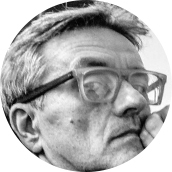 About the Author
About the Author
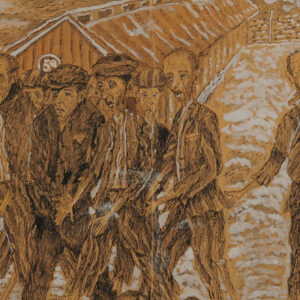 More Online Art Books
More Online Art Books
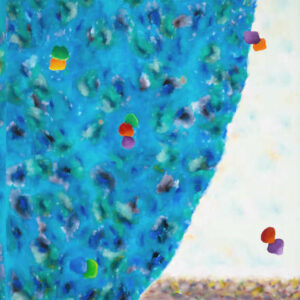 Acknowledgements
Acknowledgements